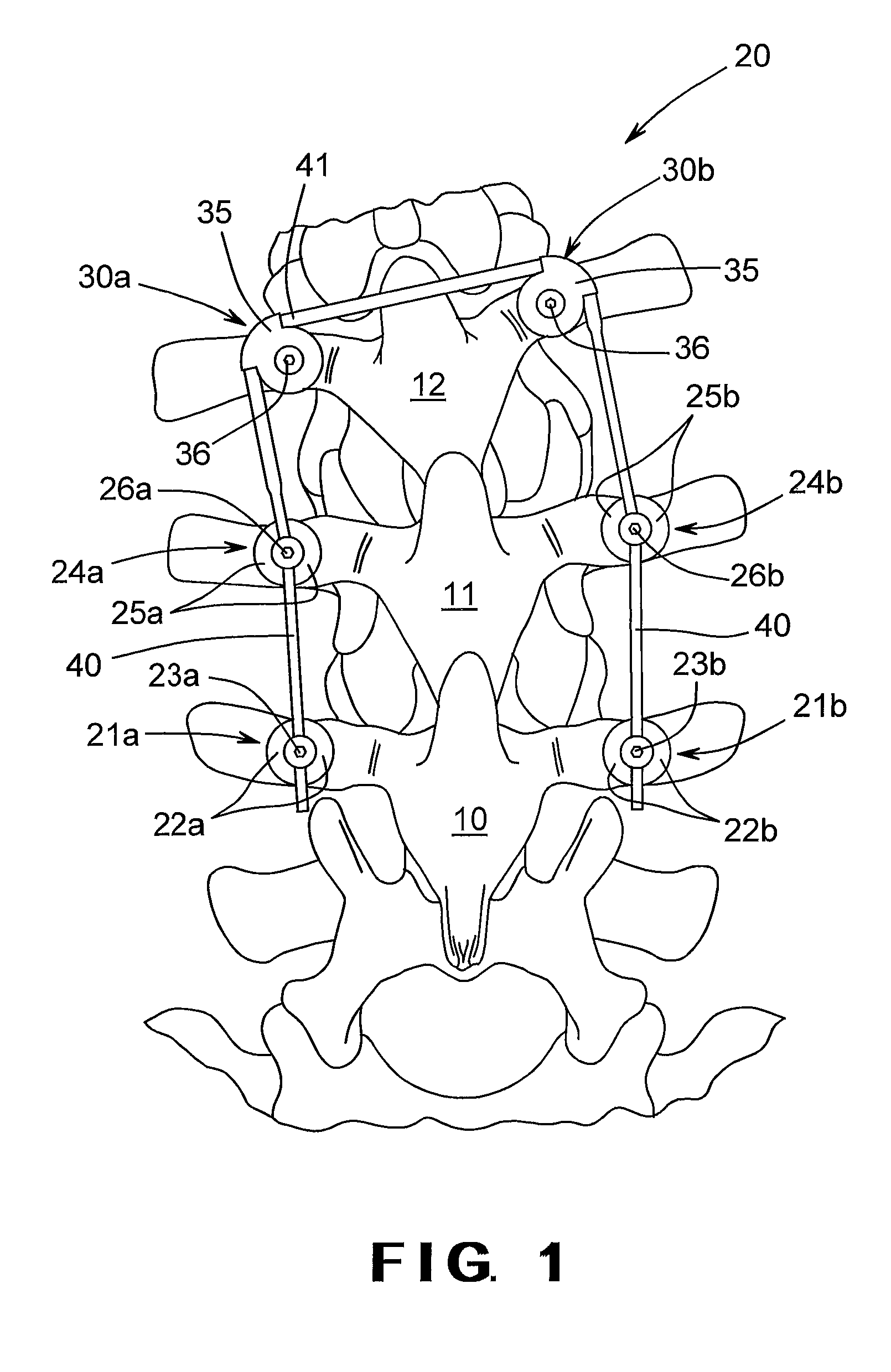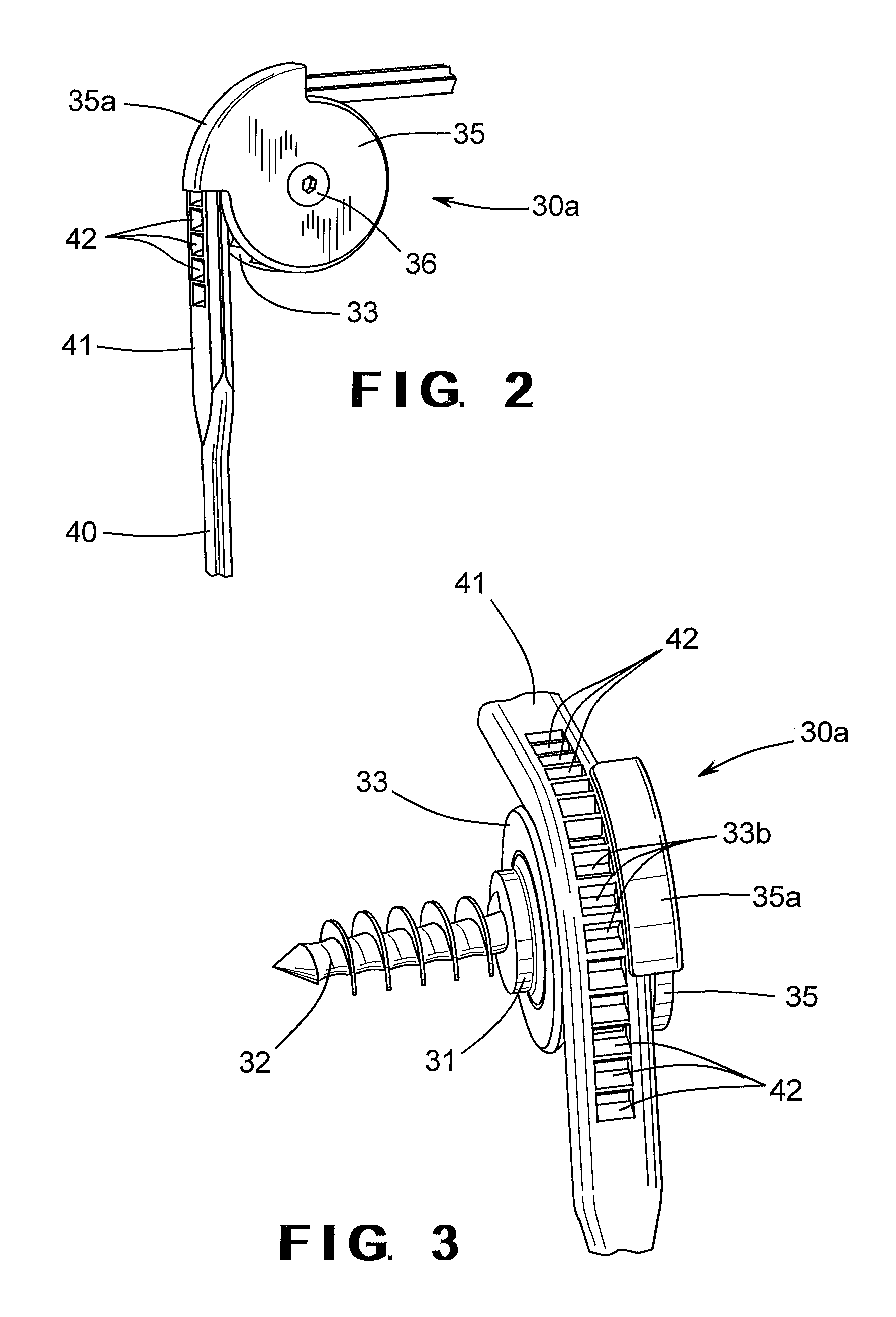Unidirectional rotatory pedicle screw and spinal deformity correction device for correction of spinal deformity in growing children
a technology of spinal deformation and pedicle screw, which is applied in the field of orthopedic spinal surgery, can solve the problems of difficult to accurately predict the severity of scoliosis deformation, and achieve the effects of preventing the ingrowth of soft tissue, preventing the insertion of cables, and prolonging the safety record
- Summary
- Abstract
- Description
- Claims
- Application Information
AI Technical Summary
Benefits of technology
Problems solved by technology
Method used
Image
Examples
Embodiment Construction
[0032]Referring now to the drawings, there is illustrated in FIG. 1 three vertebrae 10, 11, and 12 of a portion of a spine. The illustrated vertebrae 10, 11, and 12 may be located in any region of the spine, but typically are located in the thoracic or lumbar regions. The three vertebrae 10, 11, and 12 are shown in a curved orientation relative to one another, wherein the left sides of the vertebrae 10, 11, and 12 are spaced apart from one another by shorter distances than the right sides thereof. As a result, the left side of the illustrated portion of the spine presents a concave shape, while the right side of the illustrated portion of the spine presents a convex shape. Such a condition is referred to as scoliosis, which is an abnormal curvature of the spine when viewed from the front or rear. Typically, scoliosis involves a relatively large number of vertebrae (i.e., more than three) in the spine. However, for the sake of simplicity and to facilitate the understanding of this in...
PUM
 Login to View More
Login to View More Abstract
Description
Claims
Application Information
 Login to View More
Login to View More - R&D
- Intellectual Property
- Life Sciences
- Materials
- Tech Scout
- Unparalleled Data Quality
- Higher Quality Content
- 60% Fewer Hallucinations
Browse by: Latest US Patents, China's latest patents, Technical Efficacy Thesaurus, Application Domain, Technology Topic, Popular Technical Reports.
© 2025 PatSnap. All rights reserved.Legal|Privacy policy|Modern Slavery Act Transparency Statement|Sitemap|About US| Contact US: help@patsnap.com



